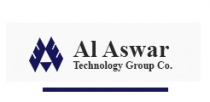Global Technical Ceramics Market Forecast 2019-2023 - Quantify the Growth Opportunities for Each Powder Chemistry - ResearchAndMarkets.com
The "Global Technical Ceramics Market, Forecast to 2023" report has been added to ResearchAndMarkets.com's offering.
Fabrication of technical ceramics is a complex multi-stage process. Whilst there are other ways to produce finished parts, sintering of ceramic powder remains the dominant process. In most cases, the powder producer and part fabricator are distinct, so powder producers are a critical part of the overall industry value chain.
Often, the fabrication of finished parts receives the most attention, and the critical role played by powder preparation can be overlooked. This study addresses that issue, by quantifying the growth potential in the technical ceramics market for powder producers.
The focus of this global analysis on technical ceramics is to quantify the growth opportunities for each powder chemistry. The key chemistries included are alumina, zirconia, silicon carbide, silicon nitride (including SiAlONs) and boron-based ceramics (boron carbide and boron nitride). Other oxide ceramics include mixed oxides such as forsterite. Other non-oxide ceramics include materials such as aluminium nitride.
As is the case for many other materials, the efficient use of natural resources is becoming an increasingly important concern. This has been highlighted in recent years by supply issues for materials such as zircon and even for pure silica sand.
The efficient use of resources is developing in many ways in the technical ceramics industry. One is the development of additive manufacturing, which reduces waste by removing the need for machining of the final part. Another is the exploration of new sources of raw materials. Several innovative projects are underway to extract ceramic raw materials from the waste streams of other industries.
A feature of many ceramic powders is that, even within a single product type (alumina or silicon carbide for example), there is a very wide range of grades available. The price difference between the most commoditised grades, and the most speciality grades can be more than 1:20. Growth in demand for the most high-end grades, therefore, has a disproportionately large effect on revenue growth.
Defining what is a technical ceramic application, and what is not, can vary from one company to another. For example, some companies are more likely than others to include certain refractory materials, such as kiln furniture, within "technical ceramics." The study states which of these markets is included within scope for each material.
Technical ceramics are used in a wide range of applications. The main markets include electrical equipment, industrial machinery, automotive, oil gas & chemicals, the energy industry, and medical devices & implants.
Key Topics Covered:
1. Executive Summary
- Key Findings
- Market Engineering Measurements
- CEO's Perspective
2. Market Overview
- Market Definitions
- Supply Chain and Route to Market Trends
- Key Questions this Study will Answer
3. Market Dynamics - Total Technical Ceramics Market
- Market Dynamics
- Market Dynamics Explained
4. Forecasts and Trends - Total Technical Ceramics Market
- Market Engineering Measurements
- Revenue Forecast
- Volume Forecast
- Volume and Revenue Forecast Discussion
- Percent Revenue Forecast by Product Type
- Percent Volume Forecast by Product Type
- Revenue and Volume Forecast Discussion by Product Type
5. Market Share and Competitive Analysis - Total Technical Ceramics Market
- Competitive Environment
- Competitive Factors and Assessment
- Product Matrix
6. Growth Opportunities and Companies to Action
- Summary of Growth Opportunities
- Growth Opportunity 1 - Smart Multi-Material Concepts
- Growth Opportunity 2 - Diversification
- Growth Opportunity 3 - Process Technology
- Strategic Imperatives for Success and Growth
7. Alumina Segment Analysis
- Alumina Segment - Introduction
- Alumina Segment - Drivers and Restraints
- Alumina Segment - Drivers
- Drivers Explained
- Alumina Segment - Restraints
- Restraints Explained
- Revenue and Volume Forecast
- Alumina Supply Chain
- Supply Chain Dynamics - Discussion
- Alumina Segment - Competitive Structure
8. Zirconia Segment Analysis
- Zirconia Segment - Introduction
- Zirconia Segment - Drivers and Restraints
- Zirconia Segment - Drivers
- Drivers Explained
- Zirconia Segment - Restraints
- Restraints Explained
- Revenue and Volume Forecast
- Zirconia Supply Chain
- Supply Chain Dynamics - Discussion
- Zirconia Segment - Competitive Structure
9. Other Oxide Ceramics Segment Analysis
- Other Oxide Ceramics Segment - Introduction
- Revenue and Volume Forecast
- Revenue Forecast Discussion
- Other Oxide Ceramics Supply Chain
- Other Oxide Ceramics Segment - Competitive Structure
10. Silicon Carbide Segment Analysis
- Silicon Carbide Segment - Introduction
- Silicon Carbide Segment - Drivers and Restraints
- Silicon Carbide Segment - Drivers
- Drivers Explained
- Silicon Carbide Segment - Restraints
- Restraints Explained
- Revenue and Volume Forecast
- Silicon Carbide Supply Chain
- Supply Chain Dynamics - Discussion
- Silicon Carbide Segment - Competitive Structure
11. Silicon Nitride Segment Analysis
- Silicon Nitride Segment - Introduction
- Silicon Nitride Segment - Drivers and Restraints
- Silicon Nitride Segment - Drivers
- Drivers Explained
- Silicon Nitride Segment - Restraints
- Restraints Explained
- Revenue and Volume Forecast
- Silicon Nitride Supply Chain
- Supply Chain Dynamics - Discussion
- Silicon Nitride Segment - Competitive Structure
12. Boron Nitride and Boron Carbide Segment Analysis
- Boron Nitride and Boron Carbide Segment - Introduction
- Boron Nitride and Boron Carbide Segment - Drivers and Restraints
- Boron Nitride and Boron Carbide Segment - Drivers
- Drivers Explained
- Boron Nitride and Boron Carbide Segment - Restraints
- Restraints Explained
- Revenue and Volume Forecast
- Segmentation by Product Type
- Boron Nitride Supply Chain
- Boron Carbide Supply Chain
- Supply Chain Dynamics - Discussion
- Boron Ceramics Segment - Competitive Structure
13. Other Non-Oxide Ceramics Segment Analysis
- Other Non-Oxide Ceramics Segment - Introduction
- Revenue and Volume Forecast
- Supply Chain Dynamics
14. The Last Word
15. Appendix
For more information about this report visit https://www.researchandmarkets.com/r/odnh5h
View source version on businesswire.com: https://www.businesswire.com/news/home/20190524005299/en/





